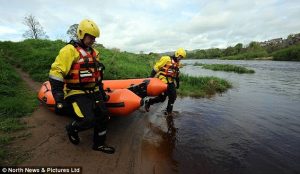
Skimboarding is a sport that combines elements from aquatic and terrestrial sports and has gained popularity with increased riskier maneuvers. Spinal cord injuries associated with this sport have rarely been reported. Here we present a case of a previously healthy 44-year-old male with a life-threatening C2/C3 fracture and dislocation after a skimboarding fall. Traumatic facet dislocations in the cervical spine are usually consequent to high-energy transmission injuries, so it is difficult to explain the mechanism of injury in this clinical case. As this sport’s practice continues to grow, our purpose is to emphasize that these injuries may occur with irreversible consequences as most of the damage occurs at the time of presentation, so the first step is to alert athletes and the community to prevent them.
Keywords: water sport injuries, skimboarding, traumatic cervical spine injury, life-threatening, spinal cord
Go to:
Introduction
The incidence of spinal fractures related to trauma is about 19-88 per 100,000 persons, 19%-51% of which involve the cervical spine, and cervical spinal cord injuries are associated with a much higher short- and long-term morbidity than other spinal cord injuries [1,2]. In comatose trauma patients, the prevalence of cervical spinal cord injury accounts for 7.7%, almost half of which are unstable injuries [3]. Incomplete spinal cord lesions are the most frequent injuries (31%), and it is estimated that tetraplegia occurs in 20% of the cases [2]. Motor vehicle collisions are the leading cause of spinal cord injury (42%), and sports injuries are a less frequent cause (8%) [2,4]. Injuries of C2-C3 are rare, as a result of the biomechanics of the vertebral column [5]. Many of these patients die at the scene due to their injuries and 29% die before reaching the hospital due to other injuries or respiratory muscle paralysis [6].
Skimboarding is a sport that combines elements from aquatic and land-based sports [7]. It is performed in shallow water, where the wave recedes toward
Leave a Reply